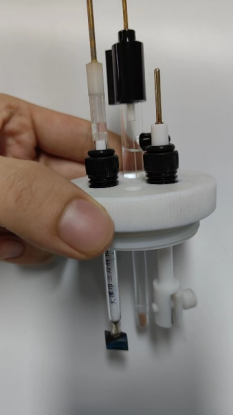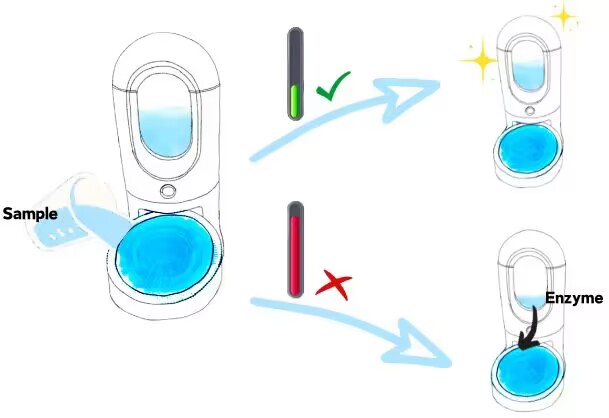1.Thoroughly clean all glassware in aqua regia, rinse with ultrapure water, and dry at 40°C in an oven.
2.Prepare a certain amount of 1% sodium citrate.
3.Heat 100 ml of 0.117 g/L HAuCl4 aqueous solution to boiling, quickly add 1.173 mL of 1% sodium citrate to the boiling solution, and stir continuously.
4.When the solution changes from light yellow to wine red, start timing. After boiling for ten minutes, stop heating; continue stirring for fifteen minutes, then store the prepared Au NPs in a light-sealed container at 4°C.
1.Immerse CP (carbon paper) in acetone, ethanol, and ultrapure water in sequence, and clean it by ultrasonic waves for 30 minutes before drying it at 80°C.
2.Before modifying the CP electrode, stick waterproof tape on its surface. The working area is 0.1256 cm².
3.Drop 50 μL of Au NPs colloid on the surface of the CP working area and dry it at 37°C.
4.Prepare a 20 mM dopamine solution with 0.05 M Tris-HCL as the solvent and pH = 8.5.
5.Immerse the dried electrode in the above solution under stirring for 3 hours, take out the electrode, and rinse its surface with ultrapure water.
6.Prepare a 20 mg/ml NiR solution (NiR is nitrite reductase, and PBS is used as the solvent with pH = 7).
7.At 4°C, incubate the electrode with 20 μL NiR solution for 12 hours to obtain NiR/PDA/Au NPs/CP enzyme electrode.
A three-electrode system was used for electrochemical performance testing and nitrite detection experiments: saturated calomel electrode (SCE) was used as reference electrode, platinum wire electrode was used as counter electrode, and NiR/PDA/Au NPs/CP electrode was used as working electrode. Before electrochemical detection, place the electrode in PBS buffer (pH = 7.0) for multiple cyclic voltammetry scans to obtain a stable electrical signal.


Figure1&2:Instruments to carry out the detection of Nitrite

Figure 3:The product we envisioned